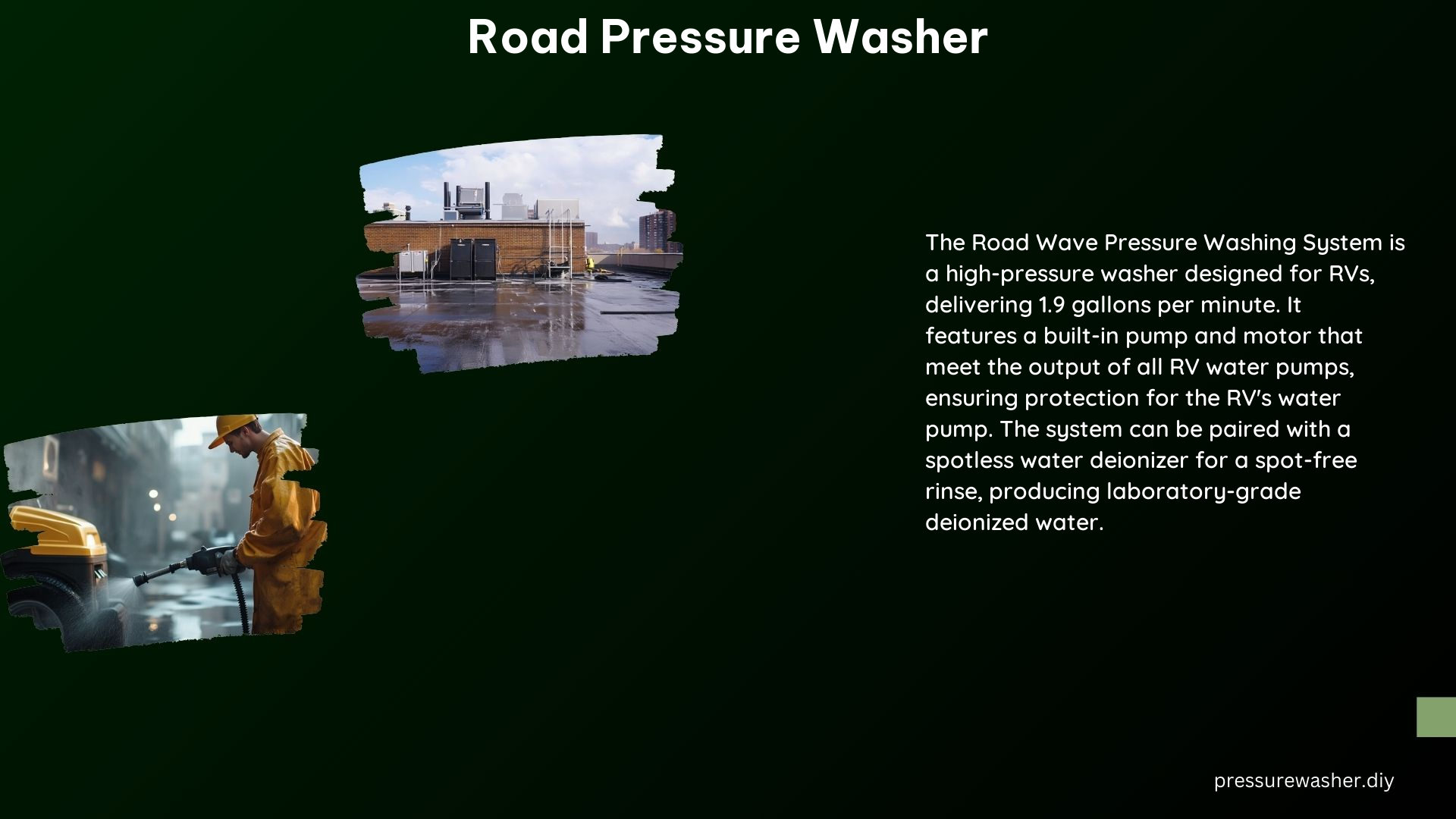Road pressure washers are powerful tools designed to tackle the toughest cleaning challenges on outdoor surfaces, from asphalt and concrete to sidewalks and driveways. These high-performance machines utilize intense water pressure to effectively remove dirt, grime, and even stubborn stains, making them an indispensable asset for maintaining the cleanliness and appearance of public and private spaces.
Preparation: Setting the Stage for Successful Road Pressure Washing
Before you embark on your road pressure washing journey, it’s crucial to ensure proper preparation. This includes:
-
Clearing the Area: Thoroughly inspect the area to be cleaned, removing any debris, obstacles, or loose materials that could be dislodged by the high-pressure water stream. This not only enhances the efficiency of the cleaning process but also minimizes the risk of damage or injury.
-
Donning Protective Gear: Safety should be your top priority when operating a road pressure washer. Equip yourself with the necessary personal protective equipment (PPE), including:
- Sturdy, waterproof gloves to protect your hands from the high-pressure water and potential debris
- Safety glasses or goggles to shield your eyes from splashing water and airborne particles
-
A face mask or respirator to prevent the inhalation of any harmful substances
-
Selecting the Right Nozzle and Pressure Setting: The success of your road pressure washing endeavor largely depends on choosing the appropriate nozzle and pressure setting for the specific surface and cleaning task at hand. Consult the manufacturer’s recommendations or seek guidance from experienced professionals to ensure optimal performance and safety.
Mastering the Pressure Washing Technique

Once you’ve completed the preparatory steps, it’s time to put your road pressure washer into action. Follow these best practices for effective and efficient cleaning:
-
Initiating the Pressure Washer: Start the machine and allow it to reach the desired pressure level, typically ranging from 1,700 to 4,000 PSI (pounds per square inch) or higher, depending on the task.
-
Maintaining the Proper Angle and Distance: Hold the nozzle at a 45-degree angle, approximately 12 inches from the surface you’re cleaning. This angle and distance help to maximize the cleaning power while minimizing the risk of damage to the surface.
-
Employing a Consistent, Overlapping Pattern: Move the nozzle in a steady, overlapping pattern to ensure thorough and even coverage of the area. This methodical approach helps to prevent missed spots and ensures a comprehensive clean.
-
Selecting the Appropriate Nozzle Type: Utilize a wide fan-style nozzle for larger areas, as it provides a broader coverage area. For more precise cleaning or targeting specific spots, opt for a narrower nozzle tip.
Prioritizing Safety: Crucial Precautions for Road Pressure Washing
Maintaining a safe work environment is paramount when operating a road pressure washer. Adhere to the following safety guidelines:
-
Avoiding Hazardous Targets: Refrain from spraying water directly at people, animals, or electrical components, as the high-pressure stream can cause serious injury or damage.
-
Protecting Sensitive Surfaces: Keep the nozzle a safe distance away from windows, doors, and other delicate surfaces to prevent unintended damage.
-
Exercising Caution with Loose Materials: Use extra care when cleaning around loose gravel or other materials that could be dislodged by the powerful water stream, as they may pose a risk of injury or property damage.
-
Maintaining the Machine: Ensure that your road pressure washer is properly maintained and in good working condition to minimize the risk of malfunctions or accidents during operation.
-
Following Manufacturer’s Instructions: Carefully read and adhere to the manufacturer’s guidelines for the safe and effective use of your road pressure washer.
Choosing the Right Road Pressure Washer for Your Needs
Selecting the appropriate road pressure washer for your specific cleaning requirements is crucial for achieving optimal results. Consider the following factors when making your choice:
-
Cleaning Task and Surface Type: Identify the type of surface you’ll be cleaning, such as asphalt, concrete, or sidewalks, and assess the level of dirt, grime, or stains present. This information will help you determine the necessary pressure and flow rate.
-
Pressure Rating (PSI): Road pressure washers typically range from 1,700 to 4,000 PSI or higher. Higher pressure ratings are generally required for more demanding cleaning tasks, while lower pressure settings may be suitable for lighter-duty applications.
-
Flow Rate (GPM): The flow rate, measured in gallons per minute (GPM), is another crucial factor to consider. Higher flow rates, typically ranging from 1.5 to 4.5 GPM or more, provide increased cleaning power and coverage.
-
Additional Features: Look for road pressure washers equipped with useful features, such as water recovery systems, onboard water tanks, adjustable pressure controls, and a variety of nozzle types. These features can enhance the versatility and efficiency of your cleaning operations.
Technical Specifications of Road Pressure Washers
To help you make an informed decision, here’s a breakdown of the key technical specifications you should be aware of when selecting a road pressure washer:
| Specification | Range |
|---|---|
| Pressure Rating (PSI) | 1,700 to 4,000 PSI or higher |
| Flow Rate (GPM) | 1.5 to 4.5 GPM or higher |
| Additional Features | – Water recovery systems – Onboard water tanks – Adjustable pressure controls – Variety of nozzle types |
Remember, the specific pressure and flow rate requirements will depend on the cleaning task and surface type. It’s essential to carefully evaluate your needs and choose a road pressure washer that can effectively handle the job while ensuring safe and efficient operation.
References
- Swirly Surface Cleaner. (n.d.). Ride On Surface Cleaner Pressure Washer. Retrieved from https://swirlysurfacecleaner.com/
- Amazon. (n.d.). Road Cleaning Machine. Retrieved from https://www.amazon.com/road-cleaning-machine/s?k=road+cleaning+machine
- Dynaset. (n.d.). KPL High Pressure Street Washing Unit. Retrieved from https://dynaset.com/product/kpl-high-pressure-street-washing-unit/
- Ultimate Washer. (n.d.). Road Clean Ups, Road Pressure Washing. Retrieved from https://www.ultimatewasher.com/articles/road-clean-ups.htm
- Portable Water Di. (n.d.). The Road Wave Pressure Washing System. Retrieved from https://www.portablewaterdi.com/shop/the-road-wave-pressure-washing-system
